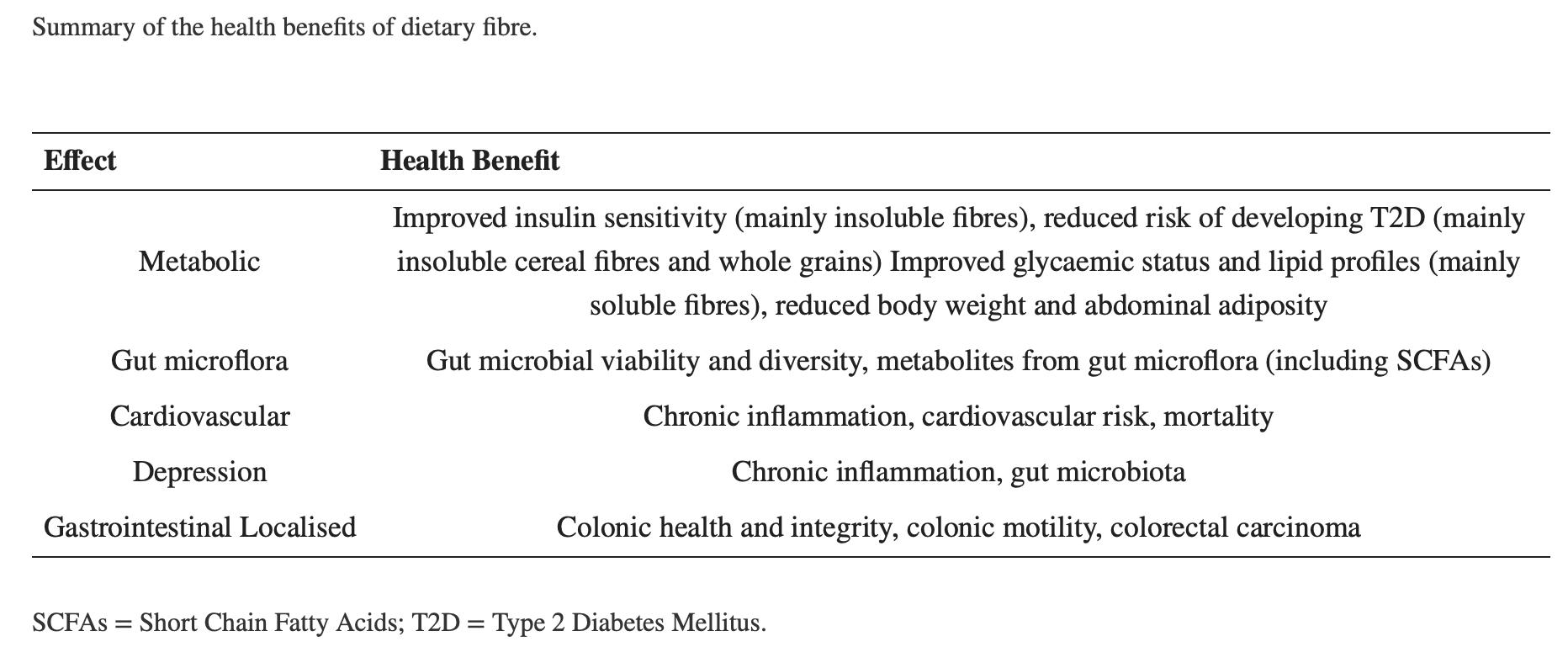Have You Counted Your Fiber Lately?
We often count things as we eat. We count fat grams, carbs, and calories. We religiously monitor the numbers on our scales. However, very few of us have ever calculated how much fiber we consume per day.
The USDA's recommendations for fiber are 25 grams for women and 38 grams for men each day. Unfortunately, only 5% of Americans hit these minimum daily recommendations, with the the vast majority of us consuming only 10 to 15 grams of fiber daily. Moreover, research suggests that 50 grams of fiber daily is actually optimal for reduction of colon cancer.
So, do you know where you fall? Have you tried counting fiber grams for a day or two? If you haven’t, Cronometer will easily do it for you. You just enter what you eat throughout the day, and it will provide you with your fiber totals, as well as showing you which foods are contributing to your fiber intake.
Why should we care about fiber?
According to the National Library of Medicine, a high-fiber diet confers the following health benefits:
Bowel Regularity: Insoluble fibers help maintain bowel movements. They absorb water and soften the stool. Soft stool is easier to pass, preventing constipation. They also add bulk to stools helping to alleviate loose stools.
Improved Bowel Health: A high fiber diet prevents the formation or worsening of hemorrhoids and diverticular disease, which presents as outpouchings in the colon walls.
Studies have shown that a high-fiber diet decreases the risk of colorectal cancer.
Cholesterol-Lowering Effects: Soluble fibers bind to cholesterol molecules in the small intestine and prevent their absorption. The cholesterol-lowering properties of soluble fibers help to prevent coronary heart disease.
Postprandial Glucose and Insulin Stabilization: Soluble fibers slow the absorption and digestion of carbohydrates and lower insulin demand in the body, thereby stabilizing postprandial glucose levels.
Improved Satiety and Weight Loss: Soluble fibers make the stomach contents viscous and prolong gastric emptying time. Studies have shown that fiber helps to reduce weight, improve BMI, lower body fat, and improve waist-to-hip ratio.
Cancer Prevention: Studies have shown that soluble fibers such as pectin have antioxidant properties and lower the risk of other types of cancer, including breast cancer.
Increased Longevity: High fiber intake is associated with decreased prevalence of most major lifestyle diseases, including coronary heart disease, stroke, and diabetes. It is also associated with improved immune function.
Equally importantly, fiber is the cornerstone of a healthy microbiome. It is the preferred food for our gut microbes, helping to maintain diversity of microbe species and supporting a richly and densely populated microbiome community. Without fiber, our gut bugs starve and can resort to eating our own gut mucosal lining, making us more susceptible to intestinal permeability (leaky gut) and invasion by pathogens.
www.ncbi.nlm.nih.gov/pmc/articles/PMC5131798/
www.ncbi.nlm.nih.gov/pmc/articles/PMC8305009/
Fiber also has a significant impact on our mood. “Dietary fiber is an essential component of a healthy diet, and the evidence…supports the potential for dietary fiber to reduce both inflammation and severity of depressive symptoms. High intake of dietary fiber has been associated with decreased severity of depression, likely resulting from gut microbiota–associated changes in gene transcription and increased production of the neurotransmitters γ-aminobutyric acid and serotonin.” www.academic.oup.com/nutritionreviews/article/78/5/394/5637303
Which Foods Contain Fiber?
Optimally, fiber should not come from a powder, gummy chew, or supplement. It should come from real, whole, plant foods. We need two sources of fiber in our diet, soluble and insoluble.
Soluble fiber is typically found in the inner flesh of plants. It is water-soluble, soaking up water and forming a viscous gel as it passes through our systems. This gel is consumed by our gut bugs, who ferment it and produce beneficial compounds such as short-chain fatty acids. Soluble fiber is helpful for stabilizing blood glucose and reducing cholesterol concentrations. Sources of soluble fibers are:
Fruits
Oats, barley, and psyllium
Legumes, peas, and beans
Vegetables such as broccoli and carrots
Most root vegetables
Insoluble fibers are typically found in the outer skin of plants. They are insoluble in water and usually cannot undergo fermentation by bacteria in the colon. As a result, they form the bulk of the stool and promote regular bowel function. Sources of insoluble fiber include:
Whole-wheat flour, wheat bran
Nuts
Beans
Vegetables, such as cauliflower, green beans, and potatoes
I encourage you all to count your fiber grams for a few days to see how you are doing. If you are meeting your goals, that’s fantastic! If you are low, see if you can add in more whole grains, fruits, legumes, veggies, and nuts and seeds. GO SLOWLY, though, in order to reduce GI upset. As you gradually increase your fiber levels, your good gut bugs will proliferate, and you will be able to tolerate increasing amounts of fiber without distress.
Do it for your heart health, for the cancer reduction, to improve your mood, to optimize your gut microbiome, or even to lose weight. It doesn’t matter why you hit your daily fiber goals, just get it in. Shoot for 30 grams, 50 is even better.
Happy Counting!
Wishing you excellent health and happy eating!
🌱
For more information, please refer to the following articles:
www.ncbi.nlm.nih.gov/pmc/articles/PMC8624670/
www.ncbi.nlm.nih.gov/pmc/articles/PMC5390821/
www.cambridge.org/core/journals/gut-microbiome/article/dietary-fibre-and-the-gutbrain-axis-microbiotadependent-and-independent-mechanisms-of-action/3844C700341E536779F0E35042B5F7AE

